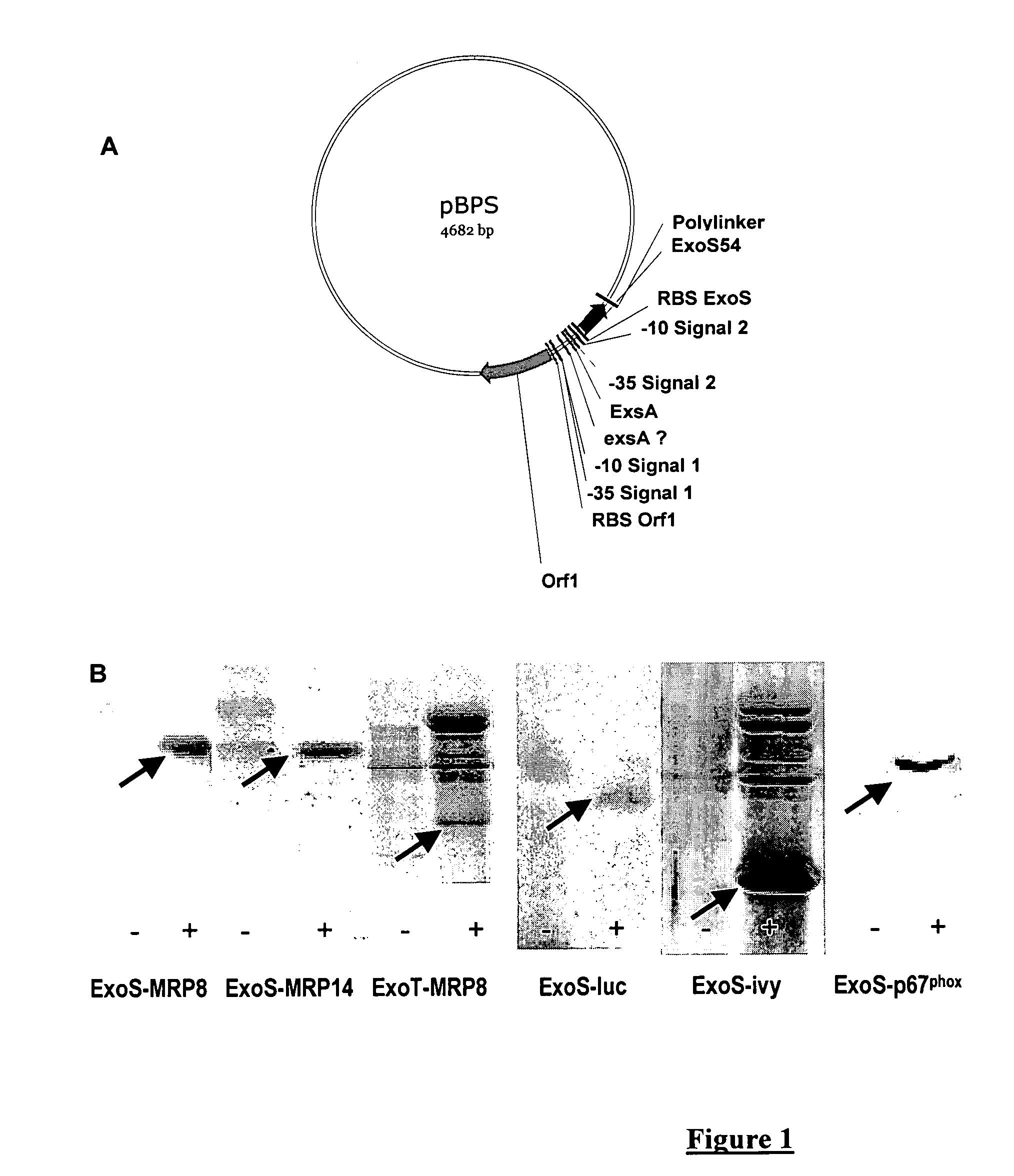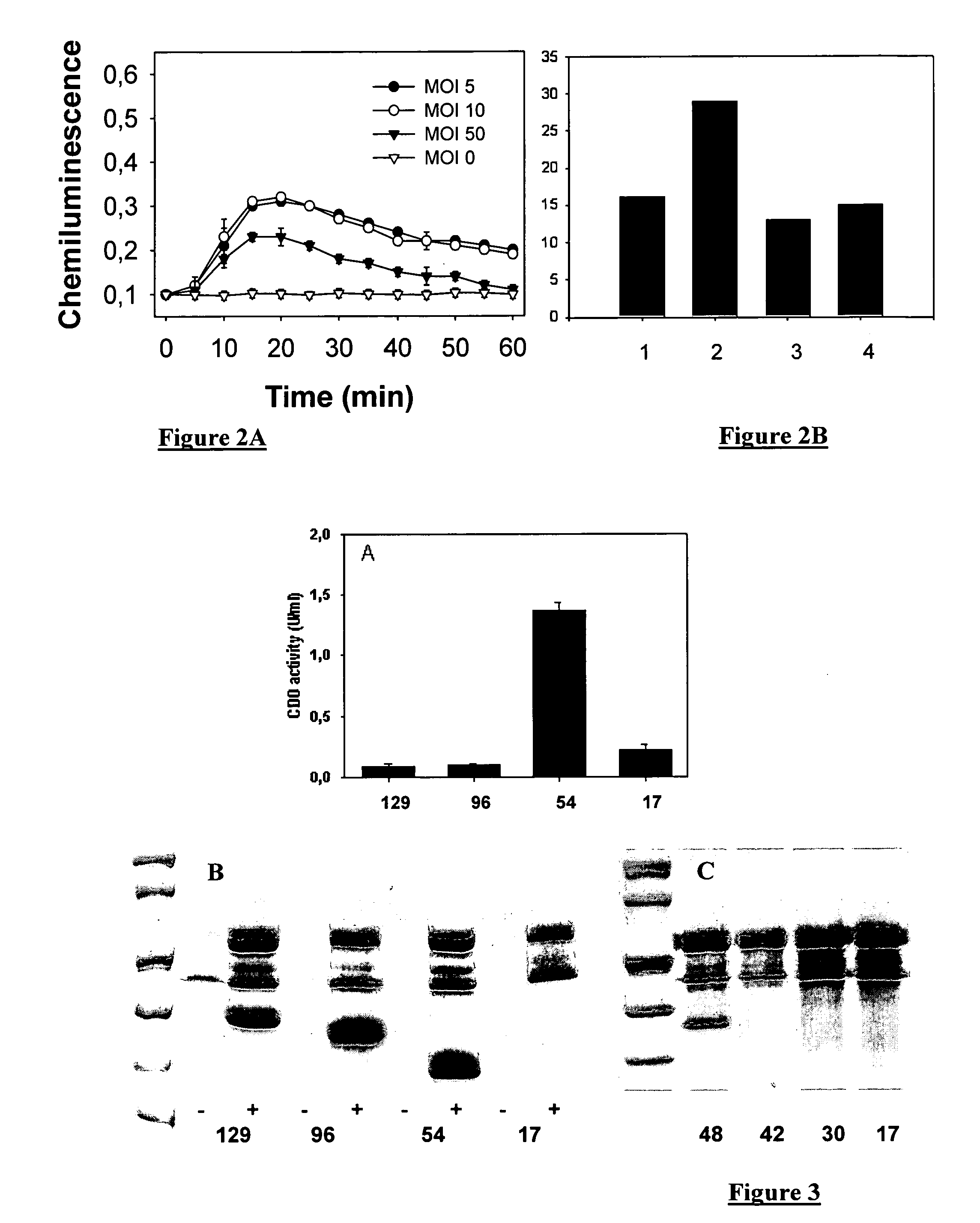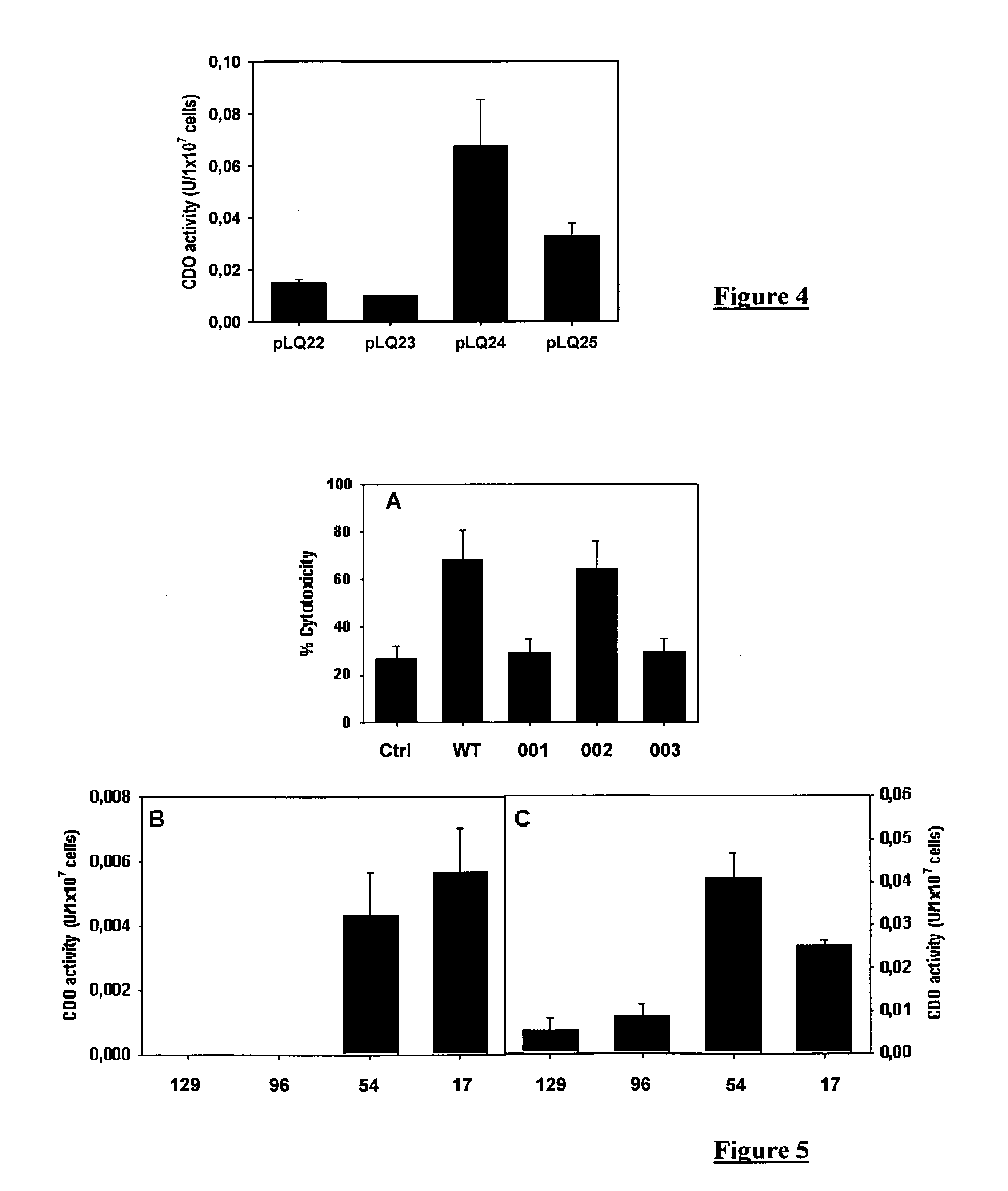Tool for the transfer and production of proteins using the pseudomonas type III secretion system
a technology of secretion system and protein, applied in the direction of peptides, dna/rna fragmentation, medical preparations, etc., can solve the problems of morbidity and mortality in people suffering from mucoviscidosis, the limit of the number of amino acids required for secretion (130 amino acids)
- Summary
- Abstract
- Description
- Claims
- Application Information
AI Technical Summary
Benefits of technology
Problems solved by technology
Method used
Image
Examples
example 1
Secreting properties of ExoS and ExoT
[0082]This example shows that a protein of interest can be produced and secreted by P. aeruginosa when it is fused with the first 54 amino acids of ExoS or ExoT. The genes encoding the proteins of interest, e.g. MRP8, MRP14, XylE, IVY, p67phox are cloned in phase with the sequence encoding the toxins secreted by TTSS, e.g. ExoS and ExoT. This sequence, optimally encoding the first 54 amino acids, is placed under the control of the natural promoter of the said toxin. The entire construction is carried by a plasmid that replicates in P. aeruginosa (FIG. 1A).
[0083]The plasmid is introduced by electroporation in a P. aeruginosa strain. The bacteria are cultivated either in the absence of TTSS induction (LB medium) or in the presence of 5 mM EGTA, 20 mM MgCl2 that allow the induction of protein synthesis and their secretion in the supernatant. The analysis of culture supernatants in the absence or presence of induction of secretion is carried out in p...
example 2
Injection Properties of ExoS
[0084]This example demonstrates that a protein of interest can be produced and injected into a cell of interest by P. aeruginosa when it is fused with the first 54 amino acids of ExoS. The genes encoding the protein of interest, e.g. P67phox, MRP8 and MRP14 are cloned in phase with the sequence encoding the toxins secreted by the TTSS, e.g. ExoS and ExoT. This sequence, optimally encoding the first 54 amino acids, is placed under the control of the natural promoter of the said toxin. The entire construction is carried by a plasmid that replicates in P. aeruginosa.
[0085]The plasmid is introduced into a P. aeruginosa strain by electroporation. The bacteria are cultivated in a LB medium in absence of TTSS induction and are brought into contact with the target eukaryotic cell (B lymphocytes for p67phox). The bacteria / eukaryotic cell ratio (MOI) is 1:50, optimally 10. After one hour of co-culture, the NADPH oxidase activity resulting from the transduction of ...
example 3
Improvement of Secretion with ExoS54
[0088]The optimal sequence length of ExoS allowing secretion was determined by using constructions of variable length fused with the XylE protein whose catechol dioxygenase enzyme activity was measured in the culture supernatant [4].
[0089]The CHA-003 strain was transformed with different plasmids allowing the expressions of ExoS-XylE fusions containing the first 129 (SEQ ID 7), 96, 54 and 17 (SEQ ID1) amino acids of ExoS. The reduction from 129 to 54 amino acids of ExoS enables at least a 6-fold increase in the CDO activity measured in the culture supernatant. Same results were obtained with the MRP8 protein. The FIG. 3B was obtained with the MRP8 protein instead of XylE. The transformed bacteria are activated to secrete the fusion proteins by calcium depletion for 3 hours. 1 ml of culture supernatant is precipitated using perchloric acid for 1 hour as described hereinabove. The proteins are separated in polyacrylamide gel in presence of SDS and s...
PUM
| Property | Measurement | Unit |
|---|---|---|
| molecular weights | aaaaa | aaaaa |
| molecular weights | aaaaa | aaaaa |
| molecular weights | aaaaa | aaaaa |
Abstract
Description
Claims
Application Information
 Login to View More
Login to View More - R&D
- Intellectual Property
- Life Sciences
- Materials
- Tech Scout
- Unparalleled Data Quality
- Higher Quality Content
- 60% Fewer Hallucinations
Browse by: Latest US Patents, China's latest patents, Technical Efficacy Thesaurus, Application Domain, Technology Topic, Popular Technical Reports.
© 2025 PatSnap. All rights reserved.Legal|Privacy policy|Modern Slavery Act Transparency Statement|Sitemap|About US| Contact US: help@patsnap.com



